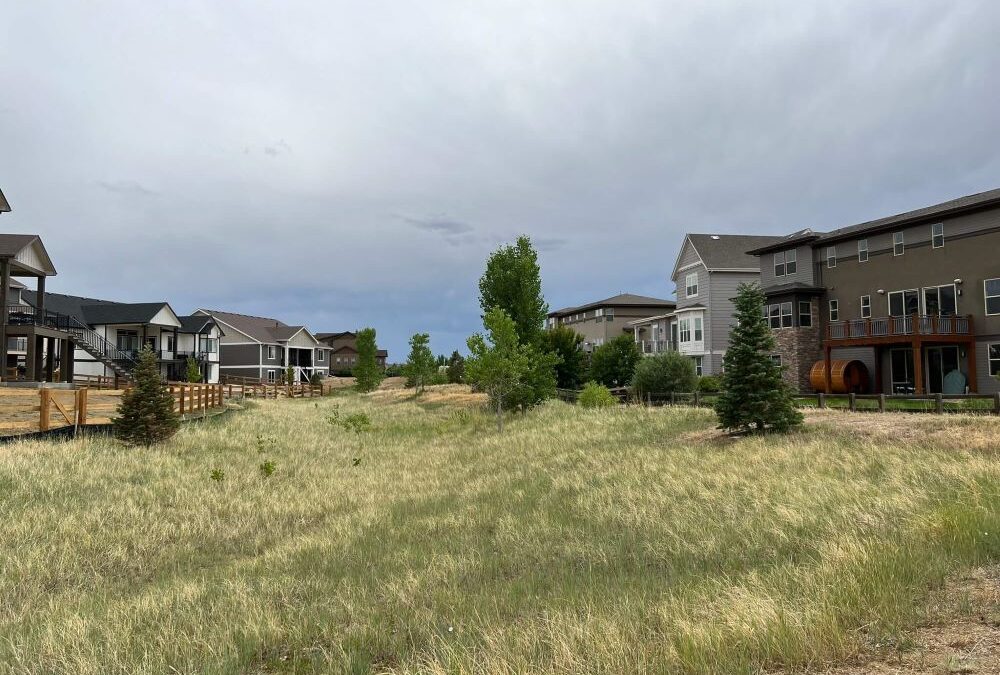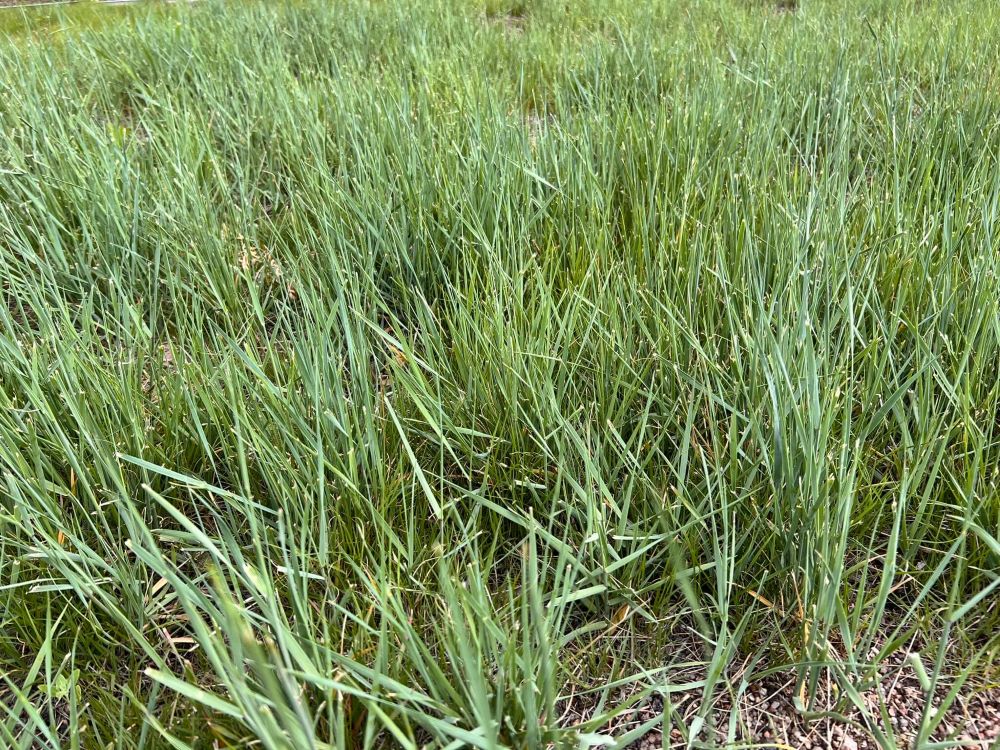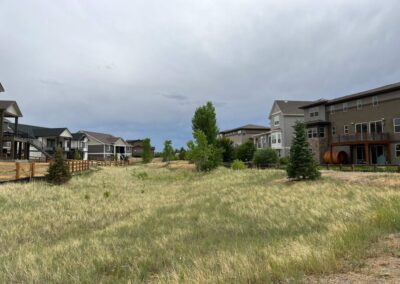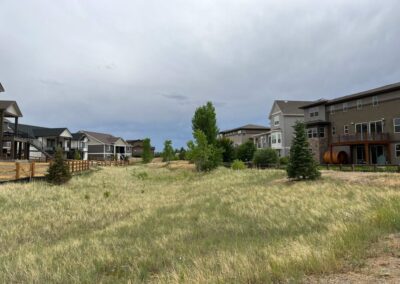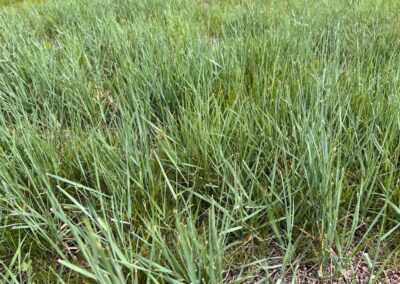Western Wheatgrass
Pascopyrum smithii
A widespread, coarse-textured native grass that grows rapidly in early spring and can be mowed twice per month or less, depending on desired height and how often it is watered.
Active Growth
April-November
Light Needs
Full Sun
Origin
Native
Best For:
- Low-use areas with minimal irrigation
- Sunny tree lawns or parkways
- Slopes that need stabilization by the grass’s spreading habit
- Low-lying passive use drainage areas, roadside ditches, or curbless roadside areas
- Outlying/peripheral areas
- Bordering natural areas
Not Suited For:
- Heavy-use areas
- Formal landscape areas
- Shaded landscapes
- Areas where a shorter, denser grass is desired
Tolerates: 30-50% less irrigation, clay soils, moderate drought, slopes, elevations above 9,000 ft
Irrigation need (FRONT RANGE)
No Irrigation
Turf Irrigation
Water Use: Water once to twice per week after establishment to maintain a green appearance.
Using Western Wheatgrass
Western wheatgrass is a cool-season, spreading grass that greens up around late March and goes dormant in early November. Because it is a sod-forming grass, it is especially useful on slopes. It also competes well with weeds and is a good option for low-maintenance, low-water areas.
Western Wheatgrass Attributes
- Rhizomatous, spreading cool-season grass
- Blue-green in color
- Wider leaf blade results in a coarser appearance
- Leaf height of 6-12 inches and an overall height of 12-24 inches with seedheads
- Excellent slope stabilizer
- Tolerant of temporary flooding
Seed Installation
- Ideal seeding time is April to September
- Should be seeded at a depth of 0.25-0.50 inches; seeding too deep can result in poor germination
- Seeding rate for landscape projects is 1 to 1.5 lbs per 1,000 square feet of area
General
Western wheatgrass is cool-season grass that can be planted throughout the growing season. It will look clumpy in the first two years, but will spread through underground runners over time.
Weed Management
Use herbicides safe for cool-season grasses. Proactive weed management during establishment is highly recommended and will result in healthy grass stands with minimal weed issues over time.
Watering for Establishment
It’s important for uniform, successful germination that the soil is kept moist until seedlings emerge. In the first two weeks, keep the soil consistently moist but avoid runoff and pooling. In weeks three and four, moisten the soil daily to prevent new seedlings from dehydrating. Fix any irrigation problems as quickly as possible to prevent seedlings from drying out and dying.
Fertilizer During Establishment
Fertilizing new seedling stands helps them grow quickly so that their leaves fully cover the soil. Apply a controlled-release or organic fertilizer at planting OR fertilize regularly with a very light dose of quickly available fertilizer. A light dose of fertilizer can be applied as often as weekly, but at a significantly lower rate than standard lawn fertilization. Apply 0.1-0.2 pounds of nitrogen per 1,000 square feet each time the area is fertilized during the establishment period. Do not fertilize after mid-August.
Mowing During Establishment
Western wheatgrass grows rapidly, especially in wet conditions. New projects may benefit from consistent mowing the first two years to create a more even appearance while the grass is filling in. If it grows tall enough to look unsightly or cause concern, mow it as high as possible, ideally so the grass is four to six inches tall after mowing. Mowing can be beneficial to create a more tidy appearance and help with weed suppression.
Long-Term Watering
Though western wheatgrass is a cool-season grass, it has similar water requirements as other Front Range native species: 8 to 10 inches of irrigation or less. It benefits from early spring moisture when its growth rate is the fastest, and under dry midsummer conditions it will turn brown. Summer irrigation will keep it active and growing.
Mowing
Western wheatgrass can be mowed more often in spring and less often as its growth slows in mid-summer. The more irrigation or precipitation it gets, the quicker it will grow.
Weed Control
Long-term weed control keeps grass healthy and attractive. Ideally, with proactive weed control early in the project, long-term weed control efforts can be minimal: spot-spraying troublesome plants. Pre-emergent weed control products can help prevent new weeds from growing—however, since they’ll also prevent new grass seed from germinating, only use them in established grass stands where you aren’t planning any overseeding or germination of additional grass seed. Identify the weed species appearing in the area and include specific weed-control strategies for those types of weeds. Only use products labeled as safe for western wheatgrass.
Fertilizing
For areas where western wheatgrass is used as a low-water groundcover, fertilize once or twice in early spring when the grass is growing rapidly. Apply nitrogen at 1 lb/1000 square feet of area. Low-input, naturalized, or restored areas do not need to be fertilized at all, but may be less dense and develop some spaces between plants over time.
Start your project
Discover how to plan and implement a native grass project for long-term success.
